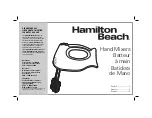
When you have your network devices physically connected, you then need to configure them to be able to talk to one
another.
Every device on a network needs a unique address, to be able to talk to one another.
IP Addresses
IP Addresses are a device’s identity on an Ethernet network. They are formed of four 8bit numbers (with a value of 0-
255), known as octets separated by dots. For example, 192.168.0.1. Every device needs an IP address, which can
either be manually assigned to a device, or automatically assigned to a device by a DHCP Server.
It is recommended (but not required) to use IP addresses within the following ranges:
10.0.0.0 - 10.255.255.255
172.16.0.0 - 172.31.255.255
192.168.0.0 - 192.168.255.255
These IP addresses have been reserved for use on local networks by IANA (Internet Assigned Numbers Authority)
Subnets
Every device, will also have a subnet mask along with their IP address. The subnet mask also uses the same format
as IP addresses, with four octets separated by dots. The Subnet mask indicates what a device can see on the
network. This is because the subnet mask is used to split the device's IP address into the "network address", and
"host address".
There are three classes of subnets, also known as "natural masks":
Class A - Subnet of 255.0.0.0
Class B - Subnet of 255.255.0.0
Class C - subnet of 255.255.255.0
As can be seen, working from octet 1 through to octet 3 of the subnet, each class changes the next octet to "255",
rather than "0". Typically in show networks, subnets in use will be one of these 3 classes.
Put simply, if there is a "255" in an octet of a device's subnet, this device can only talk to other devices with an
identical value in that octet of their IP addresses.
For example with a class A subnet, all devices must all have an identical first octet of their IP address, with the
remaining octets not having to match. For example, all devices could have 10.x.x.x, where x can be any number
between 0-255. Every device must have a unique address within this range. In this example, "10" is considered the
network address - any devices that want to talk must all be on network number 10. The remaining three octets "x.x.x"
are then the host address - each device (or "host") has a unique address within that network number.
With a class C subnet, all devices must share the first 3 octets of their IP address, leaving only the last octet to be
unique for the device. For example, 192.168.1.x where x can be any number between 0-255. Every device must have
a unique address within this range. As you can see, with a class C subnet, only different 255 devices will be able to
talk to one another. In this example, "192.168.1" is considered the network address - any devices that want to talk
must all be on network number 192.168.1. The remaining octet "x" is the the host address - each device (or "host") has
a unique address within that network number.
For example, these two devices could talk:
Device 1 - IP: 10.1.1.10, Subnet: 255.255.255.0
Zero 88 - ZerOS - Page 206 of 233
Printed: 23/11/2020 12:50:03 JH
Содержание FLX Series
Страница 18: ...Zero 88 ZerOS Page 18 of 233 Printed 23 11 2020 12 50 03 JH...
Страница 96: ...Colour Auto Effect Palettes Zero 88 ZerOS Page 96 of 233 Printed 23 11 2020 12 50 03 JH...
Страница 97: ...Zero 88 ZerOS Page 97 of 233 Printed 23 11 2020 12 50 03 JH...
Страница 197: ...Shortcuts Zero 88 ZerOS Page 197 of 233 Printed 23 11 2020 12 50 03 JH...
Страница 201: ...Zero 88 ZerOS Page 201 of 233 Printed 23 11 2020 12 50 03 JH...
Страница 224: ...Trouble Shooting Zero 88 ZerOS Page 224 of 233 Printed 23 11 2020 12 50 03 JH...
















































